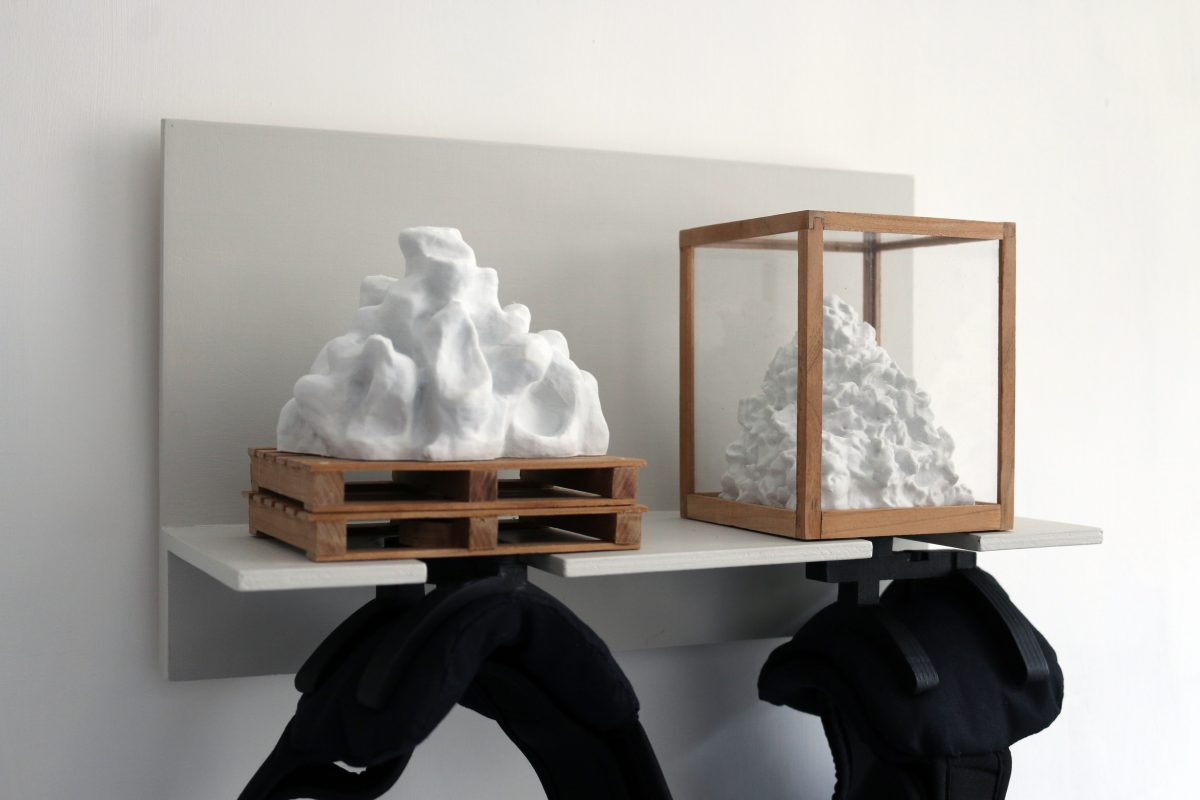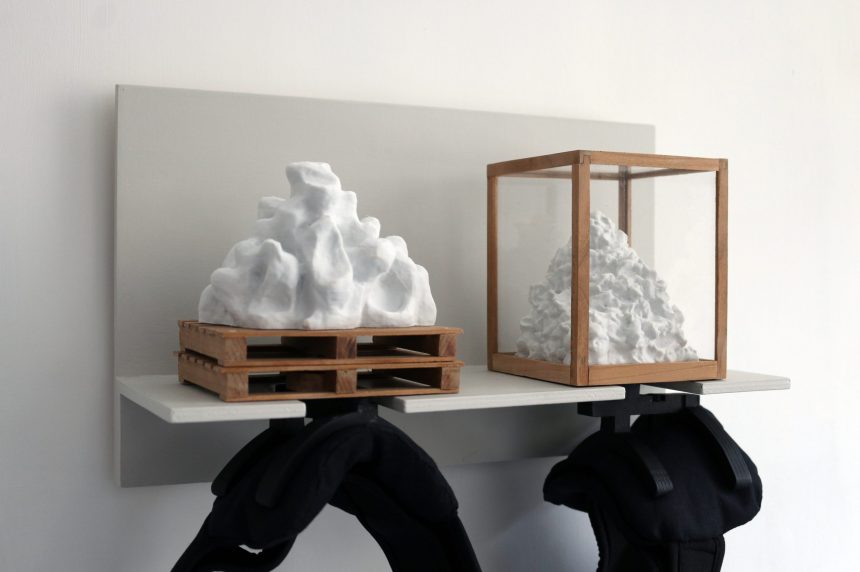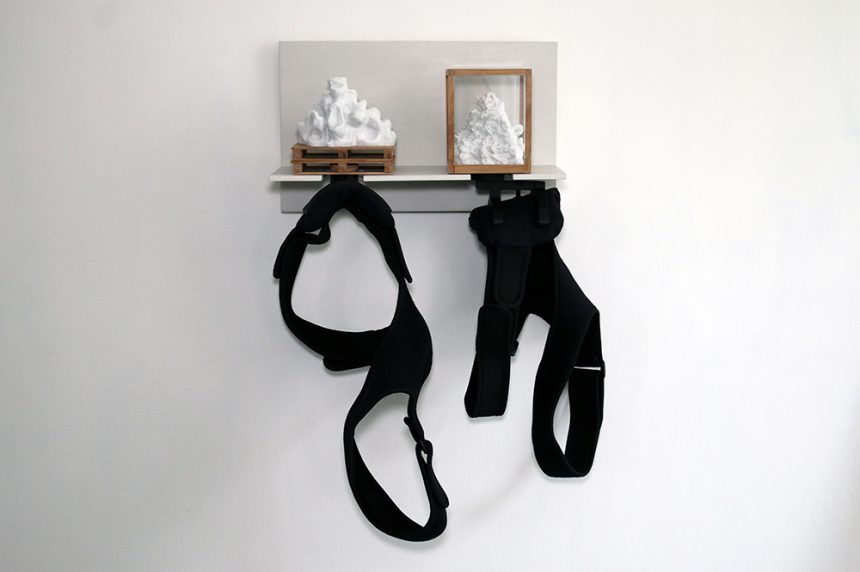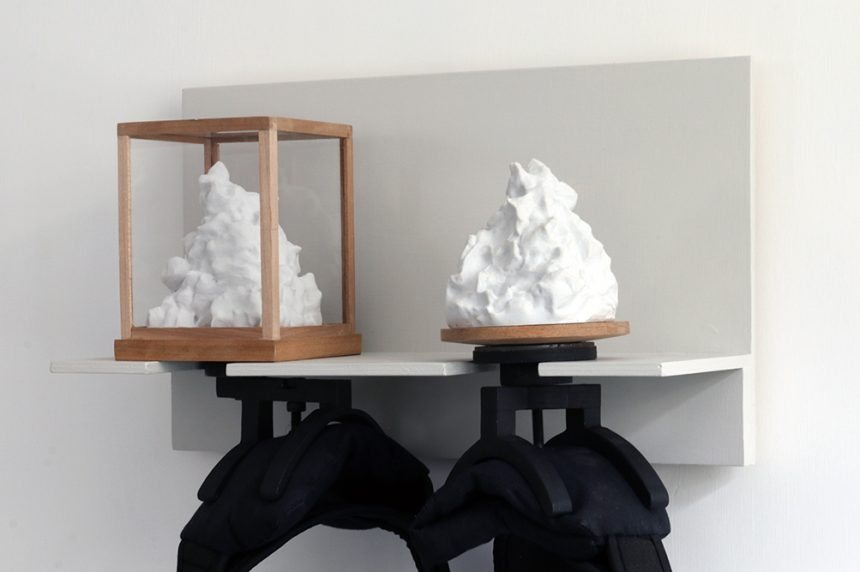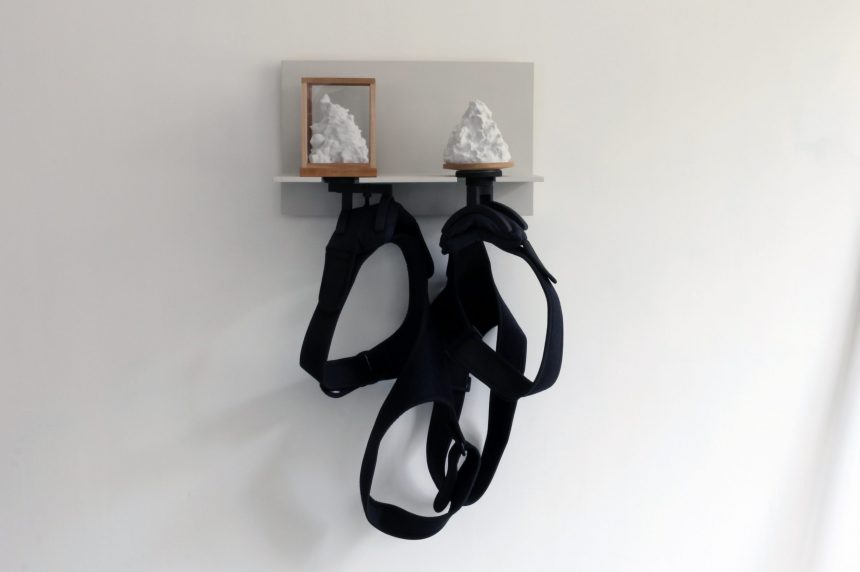The Shoulder Sculptures are based on raw clay forms (since destroyed) from Dunhill and O’Brien’s previous artworks. Initially made for the White Conduit stand at London Art Fair in 2019, the Shoulder Sculptures were either worn by the gallery director or stored in pairs on a shelf, with their harnesses hanging below.
Lost Work: Terms & Conditions
This shoulder sculpture is based on Dunhill & O’Brien’s 2019 installation for the British Ceramics Biennial, Terms & Conditions, which included a 3.5 ton raw clay form made in a single day and based on recordings of descriptions of rocks made during a series of workshops by a dentist, dressmaker, boulderer, baker, engineer and masseur. During the exhibition the raw clay form was kept damp so that it could later be distributed to local people for free. People came by car, bicycle, bus, and on foot, to collect bags of clay to use in their own creative work.
Lost Work: Sculptomatic 2
For the exhibition Sculptomatic 2 at Kunstvereniging Diepenheim, Holland, Dunhill and O’Brien worked with Dutch and UK participants, employing locally sourced clay to make a 2.5 ton raw clay form. After the exhibition the clay was returned to the suppliers for use in brick making.
Lost Work: Mountain Object
Mountain Object was made at the end of Dunhill and O’Brien’s first residency at Youkobo Art Space in Tokyo. Geta (Japanese clogs), with platform souls based on 2 mountain ranges in the Nikko area were used to model a clay mound on a turntable. The clay was later donated to the materials store for the residency.
Lost Work: Sculptomatic 1
Sculptomatic 1 was a large-scale installation that included a 10 metre motorised elevator as well as 500 images of sculptures from different periods and cultures that included holes. Assistants were employed to make clay models based on the images and each soft clay form was placed on the motorised structure, dropping from height into a vitrine to create a collective sculptural form, a 2 ton mass of raw clay. After the exhibition the clay was given to local art students.
